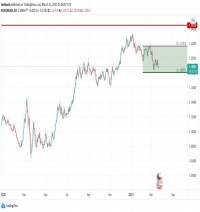|
Opalesque Industry Update - Global institutional pension fund assets in the 16 major markets grew by over 6% during 2014 (compared to around 10% in 2013) to reach a new high of US$36 trillion, according to Towers Watson’s Global Pension Assets Study. The growth is the continuation of a trend which started in 2009 when assets grew 18%, and in sharp contrast to a 22% fall during 2008 when assets fell to around US$20 trillion. Global pension fund assets have now grown at 6% on average per annum (in USD) since 2004. The research shows that defined contribution (DC) assets grew rapidly for the ten-year period to 2014, with a compound annual growth rate (CAGR) of 7%, against a rate of over 4% for defined benefit (DB) assets. As a result DC pension assets have grown from 38% of all pensions assets in 2004 to 47% in 2014 and are expected to overtake DB assets in the next few years. Roger Urwin, global investment director at Towers Watson, said: “The inexorable shift to DC, which we believe will soon constitute the majority of global pension fund assets, means it is becoming the dominant global pensions model. This brings with it the transfer of risk and a new tension in the balance of ownership and control, which will test governments and pension industries around the world. These billions of new pension members have high and immediate expectations in a world of low returns and in many cases where the benefits of pooling are not fully exploited. This pressure is likely to accelerate the emergence of a more effective “value chain”, where expense on various activities has a better value proposition than exists today. The use of passive approaches and smart betas in DC will lead to fee compression. So far that that fee compression has been small but over time it is likely to be a large disruptive force.” According to the study, pension assets now amount to around 84% of global Gross Domestic Product (GDP), substantially higher than the 54% recorded in 2008. Roger Urwin said: “While there has been a significant improvement in various pension balance sheets around the world since the financial crisis, many DB pension funds are still in very weak solvency positions. With global pension assets at only 84% of global GDP, the pensions industry gets quite poor marks for providing good value for the worker and pensioner populations. The acid test for national pension systems should be to get assets to at least 150% of GDP. If that were combined with an improving recognition of good governance as a return driver and sustainable investing as genuinely value adding, it would put the pensions world in much better shape.” According to the research, there is a clear sign of reduced home bias in equities, as the weight of domestic equities in pension portfolios fell, on average, from 65% in 1998 to 43% in 2014. During the past ten years US pension plans have maintained the highest bias to domestic equities (67% in 2014), having also increased domestic equity bias during the past three years. Canadian and Swiss funds remain the markets with the lowest allocation to domestic equities (33% and 34% respectively in 2014) while UK exposure to domestic equities has more than halved, to 36%, since 1998. The research shows Canadian and US funds have retained a very strong home bias in fixed income investment since the research began (98% and 91% respectively in 2014), while Australian and Swiss funds have reduced exposure to domestic bonds significantly since 1998: down by 31% and 17% respectively during this period. According to the research allocations to alternative assets - especially real estate and to a lesser extent hedge funds, private equity and commodities - in the larger markets have grown from 5% to 25% since 1995. In the past decade most countries have increased their exposure to alternative assets with Australia increasing them the most (from 10% to 26%), followed by the US (16% to 29%), Switzerland (16% to 28%), Canada (13% to 22%) and the UK (from 7% to 15%). Roger Urwin said: “This shift away from domestic equities is one indication of an increased focus on risk management and there are others such as diversification of assets in portfolios, which is also increasing. However from working with an increasing number of CIOs at pension funds, this focus on risk is producing two very different groups: those where the appetite for risk is being trimmed and those needing more risk to get them out of their deficit. As a result, the pensions world has to be considered at an increasingly contextual level to understand its present state and make projections about its future.” Other highlights from the report include:
DC / DB assets for P7
km |
Industry Updates
Global pension fund assets reach new highs
Monday, February 09, 2015
|
|





 RSS
RSS







